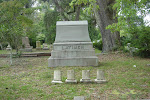e mail us @ lori.touroldwilmington@gmail.com
History Walking Tours

Open Year Round
3rd Graders on Tour!

History Walking Tour for all ages!
History of Wilmington
According to the Julian calendar, Wilmington, North Carolina, was incorporated in 1739. Located on the east bank of the Cape Fear River, the original town is 28 nautical miles from the Atlantic Ocean. Built on several rises, more like sand dunes than hills, the town ascends 50 feet from the river shoreline. Despite navigational difficulties along the river, the town grew to become the largest city in the state before the Civil War. It remained so until the second decade of the 20th century, when the state’s Piedmont tobacco and textile towns rose to prominence.
Wilmington’s historical significance is reflected in the variety of architectural styles, streetscapes and in other aspects of its material culture. The Colonial town is most visible in the original grid pattern of the streets, the numbered streets running from north to south and the named streets running from east to west. Several periods of rapid growth have altered the city’s passage through time. Very few buildings remain from the early town because of the large fires and antebellum growth stimulated by the 1840 opening of the railroad.
Three other periods of sustained growth are also noteworthy. Recovery from the Civil War with increased port and rail expansion precipitated substantial commercial activity in the late nineteenth and early twentieth centuries. Increased business and industry, particularly of cotton and fertilizer, provide a building boom both commercially and residentially, including moves to the first suburbs. This economic activity spread across the region, evident most notably in the development of the nearby beaches. After a period of decline during the Great Depression, Wilmington experienced another burst of growth during World War II Military facilities and the North Carolina Shipbuilding Company brought an unprecedented number of new residents who needed housing as well as a myriad of businesses to support their daily lives. The most recent growth can in the 1990s, after Wilmington was connected to the rest of the country by Interstate Highway 40.
Source: Wilmington Lost But Not Forgotten by Beverly Tetterron






















